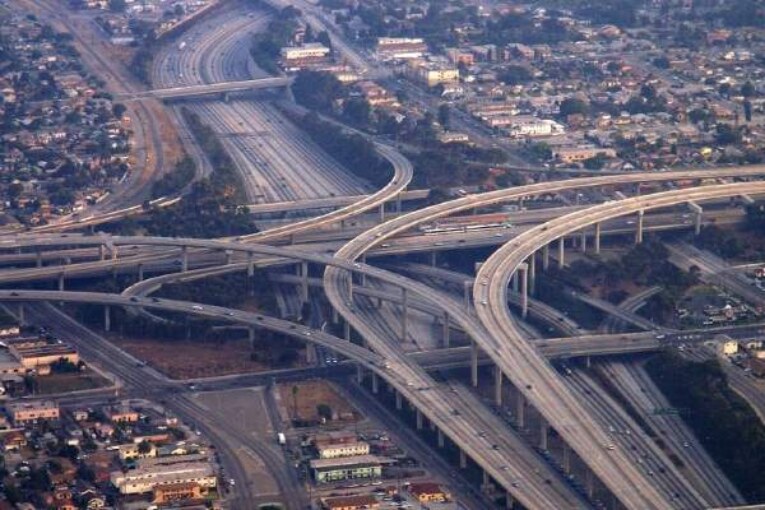
Introduction
- Indian has the second largest road network in the world.
- It is a branch of Civil Engineering, which deals with design, development, construction and maintenance of roadsways, railways, airports, harbors, docks, tunnels and bridges.
- 3.314 million kms of roadways spread across the length and breadth of the country.
- The roads are primarily made of bitumen, with some Indian National Highways having concrete roads.
- The concept of expressway roads is also catching up in India, and the Mumbai-Pune expressway and Delhi Gurgaon expressway are the finest examples.
- The first evidence of road development in the Indian subcontinent can be traced back to approximately 4000 BC from the ancient cities of Harappa and Mohenjo-Daro of the Indus Valley Civilization.
Classification of Roads
- Expressways
- National Highways
- State Highways
- Major District Roads
- District Roads
- Rural and other Roads
Expressways in India
- These are suggested in Third Road Development Plan.
- These are used to connect the Metropolitan cities like Mumbai, Delhi, Kolkata, Chennai.
- In 2009, in India, access-regulated expressways comprised around 120 miles or 200km of the National Highway System of the country.
- They have the highest design speed.
- By 2011, these added to more than 600km. These roads allow high speeding vehicles and can be categorized into four-lane and six-lane expressways.
- They should have at least four lanes.
- It has been anticipated that by 2014 around 3,530km of expressways will be put into operation from the projects that are currently going on.
- The Indian government has outlined a motivated goal to construct a new 18,637km expressway transportation system by 2022.
National Highways in India
- They run through the length and breadth of the country.
- The National Highways are the principal highways moving across the length and breadth of the nation, joining important harbours, big commercial and tourism hubs, state capitals, and so on.
- They connect national capital to all state capitals, major cities, towns, border areas.
- They should have at least two traffic lanes, good surface finishing and excellent strength to carry heavy traffic.
- National Highways in the country are represented as NH and then highway number comes after it.
- The construction and maintenance of these roads as usually carried out by central government.
- The National network in India is supervised by the Ministry of state for surface transport.
- The public works departments of various states look after the state roads and state highways.
- The state and union governments have common responsibilities for constructing through fares and sustaining the roadways in the country.
State Highways in India
- These are main roads running within the states.
- They connect important towns, cities of state with National Highway.
- The state highways are used to join with the National Highways, major towns, district headquarters, tourism hubs and small harbors and facilitate the movement of vehicles in important places of the state.
- These roads are essentially arterial roads and they facilitate accessibility to major metropolitan areas and township in the state.
- These are generally one lane but two lanes are always be preferred.
- They have modern type of bituminous or concrete surfacing.
- In association with the state highways of the boarding states and national highways. The overall span of the state highways is around 137,712km.
Major District Roads
- These are important roads within a district connecting areas of production with markets and connecting these with each other or with the state highways & national highways.
- They have single metalled lane of traffic.
- It also connects taluk headquarters and rural areas to district headquarters within the state.
- District roads which would take traffic from the main roads to the interior of the district.
- According to the important, some are considering as major district roads and the remaining as other district roads.
District Roads
- These provide links to villages serve a large rural populations.
- They should have good metallic surface and proper drainage.
- Construction and maintenance are carried by District Authority or Zila Parishad.
Rural & Urban Roads
- The rural roads in India forms a substantial portion of the Indian road network.
- These connect the villages with each other and also towns nearby.
- These are generally established earth roads but metal surface is preferred.
- These roads are in poor shape, affecting the rural populations quality of life and Indian farmer’s ability to transfer produce to market post-harvest.
- The construction and maintenance are carried by local district boards.
- Over 30 percent of Indian farmer’s harvest spoils post harvest because of the poor infrastructure. Many rural roads are of poor quality.
Conclusion
- Road network provides the network to facilitate trade, transport, social integration and economic development.
- It facilitates specialization extension of markets and exploitation of economics of scale.
- It is used for the smooth conveyance of both people and goods.
- Transportation by road has the advantage over other means of transport because of its easy accessibility, flexibility of operations, door to door service and reliability.
- Consequently, passenger and freight movement in India over the years have increasingly shifted towards roads vis-à-vis other means of transport.
- The average road speed in India has increased to 30-40 km/h.


